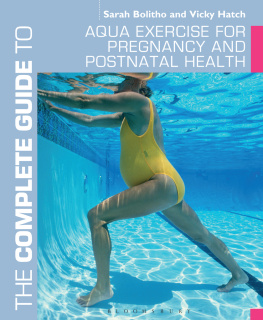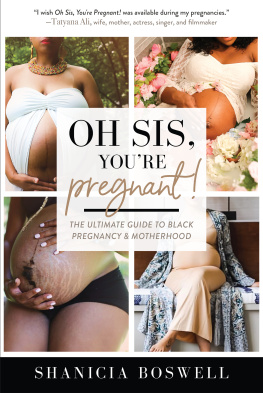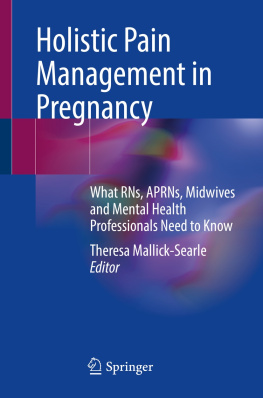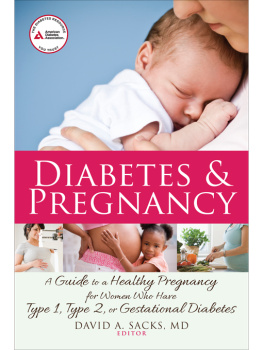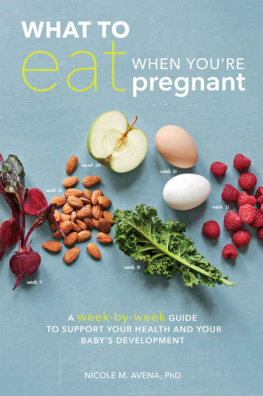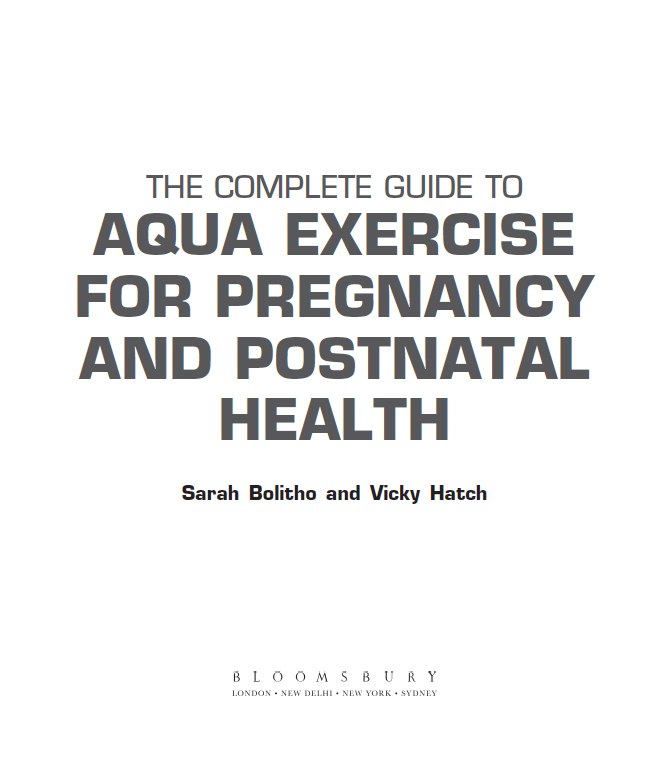Note
While every effort has been made to ensure that the content of this book is as technically accurate and as sound as possible, neither the author nor the publishers can accept responsibility for any injury or loss sustained as a result of the use of this material.
Published by Bloomsbury Publishing Plc
50 Bedford Square
London WC1B 3DP
www.bloomsbury.com
First edition 2014
This electronic edition published in 2014 by Bloomsbury Publishing Plc
Copyright 2014 Sarah Bolitho and Vicky Hatch
ISBN (print): 978-1-4081-9275-7
ISBN (epub): 978-1-4081-9275-7
ISBN (epdf): 978-1-4081-9275-7
All rights reserved.
You may not copy, distribute, transmit, reproduce or otherwise make available this publication (or any part of it) in any form, or by any means (including without limitation electronic, digital, optical, mechanical, photocopying, printing, recording or otherwise), without the prior written permission of the publisher. Any person who does any unauthorised act in relation to this publication may be liable to criminal prosecution and civil claims for damages.
Sarah Bolitho and Vicky Hatch have asserted their rights under the Copyright, Design and Patents Act, 1988, to be identified as the authors of this work.
Acknowledgements
Cover photograph Getty Images
Shutterstock with the exception of the following; pp.
Getty Images
Illustrations by Dave Gardner
Commissioning Editor: Charlotte Croft
Editor: Sarah Cole
Designer: James Watson
To find out more about our authors and their books please visit www.bloomsbury.com where you will find extracts, author interviews and details of forthcoming events, and to be the first to hear about latest releases and special offers, sign up for our newsletters here.
Bloomsbury is a trade mark of Bloomsbury Publishing Plc
CONTENTS
The aim of this book is to review the benefits of water-based exercise during pregnancy and the postnatal period to provide a unique reference guide for fitness instructors or midwives who may be involved in prescribing exercise programmes for pre- or postnatal women. It is also suitable for aqua instructors who may encounter occasional pre- or postnatal women within their water-based activity sessions, or aqua instructors whose class participants become pregnant.
We hope this book will be a complete resource for any practitioner working with pre- and post-natal women in water. It is designed to support the National Occupational Standards for the Level 2 Certificate in Fitness Instructing (Water-Based Exercise) and the Level 3 Award in Adapting Activity for Antenatal and Postnatal Clients, and combines the knowledge of these two fitness modes. The inclusion of an extensive range of exercises and class formats makes this a valuable, user-friendly resource that can be referred to on an ongoing basis for information and ideas.
We recommend that anyone who intends to deliver aqua-natal sessions is either already qualified or undertakes a specific training course such as the Level 3 Award in Adapting Activity for Antenatal and Postnatal Clients, and the Level 2 Certificate in Fitness Instructing (Water-Based Exercise), both of which cover the relevant underpinning knowledge in more depth. Midwives who want to deliver water-based exercise to their patients are advised to work alongside a qualified instructor or to gain the Level 2 Certificate in Fitness Instructing (Water-Based Exercise).

Aquatic training, or water-based exercise, is one of the most accessible exercise disciplines and can be adapted for all levels of fitness and ability. The resistance of the water supports the body and requires exercises to be performed at a slower speed, which makes water-based exercise sessions attractive and safe not only for those who are pregnant but also for beginners, older participants and for people carrying additional bodyweight.
Regular exercisers and non-exercising women may try water-based activity during pregnancy in order to stay healthy and mobile and to try to relieve some of the discomforts of pregnancy. Offering aqua-natal sessions means midwives, fitness instructors and swimming teachers who hold appropriate qualifications can support women with a normal pregnancy who want to take up or maintain activity. As well as helping to manage any aches or pains they might be experiencing, this will also provide a wealth of health-related benefits for both mother and baby.
It is normal for a pregnant woman to be concerned about exercising and the potential risks to the pregnancy and her baby. However, research now suggests that moderate exercise, particularly exercise in water, is safe and may even be beneficial for maternal health and foetal outcome (Katz, 1996; Kihlstrand et al, 1999; Hartmann & Bung, 1999; Clapp, 2000; Lox, 2000; Parker & Smith, 2003; Smith & Michel, 2006; and 2003; NICE, 2007), thus more women may seek opportunities to participate in this type of activity during pregnancy.
Acknowledgements
Sarah Bolitho
Thanks and gratitude to Vicky Hatch for working with me on this book. It is always a pleasure and a learning journey when we work together. Thank you also to everyone at Bloomsbury for giving me another chance to put my passion for writing into action.
Vicky Hatch
Thanks to Sarah Bolitho for suggesting the idea of this book and for her positive and invaluable feedback which guided every stage of our writing together.
Gratitude also goes to my husband, Chris, for his unwavering support and for doing the ironing.
UNDERPINNING KNOWLEDGE
This section covers the underpinning knowledge that will help you to plan and deliver safe and effective water-based sessions for pregnant and postnatal women. looks at the benefits of water-based exercise in pregnancy and the postnatal period, and also covers the risks and contraindications to activity at this time.
OVERVIEW OF ACTIVITY LEVELS IN PREGNANT WOMEN
It is a fact that the majority of women in the UK are inactive with only 29 per cent self-reporting that they meet the current recommendations for activity for health (see ). When accelerometers, devices that measure movement accurately, were used to measure activity, the figure dropped to around 4 per cent of women who were active enough to gain health benefits. The figures for pregnant women are equally low, as only 23 per cent self-report being active at or above the recommended levels in the past month. This low level of activity may be linked to the rising levels of obesity and being overweight in adult women in the UK; currently an estimated 32 per cent of women are classified as overweight and 26.1 per cent as obese meaning around 58 per cent of adult women in the UK are over the recommended weight guidelines (Public Health England, UK Prevalance and Trends, 2013).
PREGNANCY AND OBESITY
Just as with women in general, rates of being overweight or obese in women of childbearing age are rising. Nearly half of women of childbearing age in the UK are overweight or obese, with an estimated 22 per cent obese and, as maternal obesity carries significant risks for both maternal and foetal health, this is a major concern. Women may be overweight or obese prior to becoming pregnant, or may gain excess weight during pregnancy (eating for two). Whichever is the case, excess maternal weight may linger after delivery and might not be lost before the next pregnancy, during which more weight may be gained, and not lost, creating a cycle of pregnancy and weight gain.

